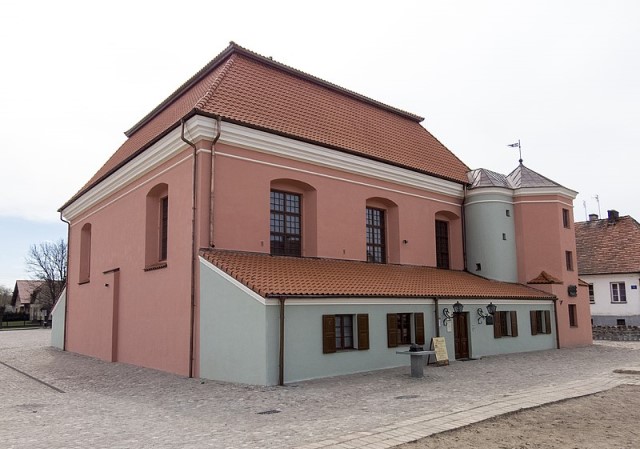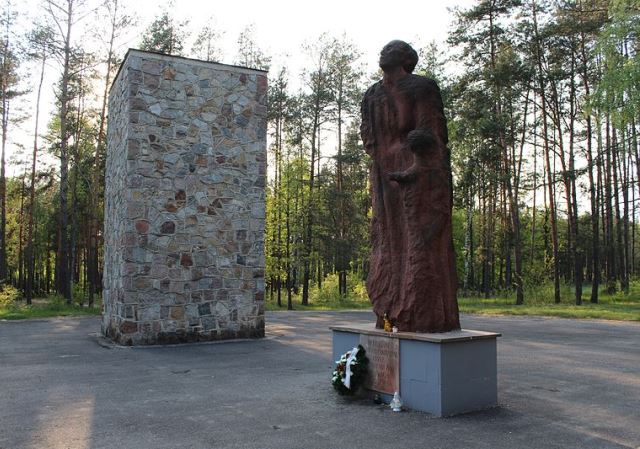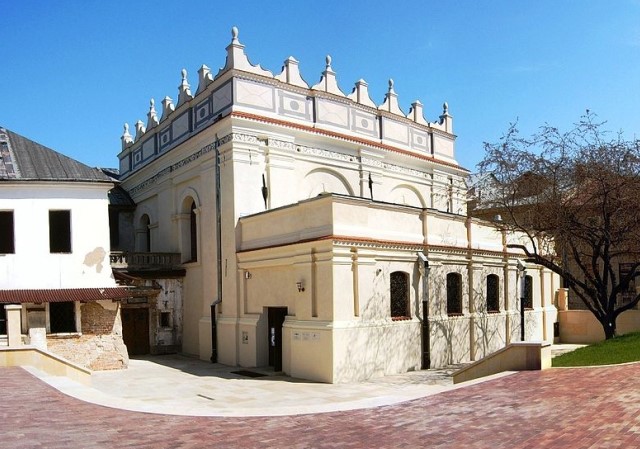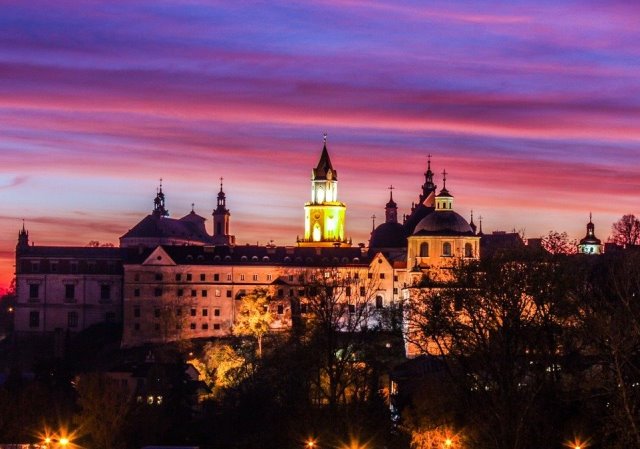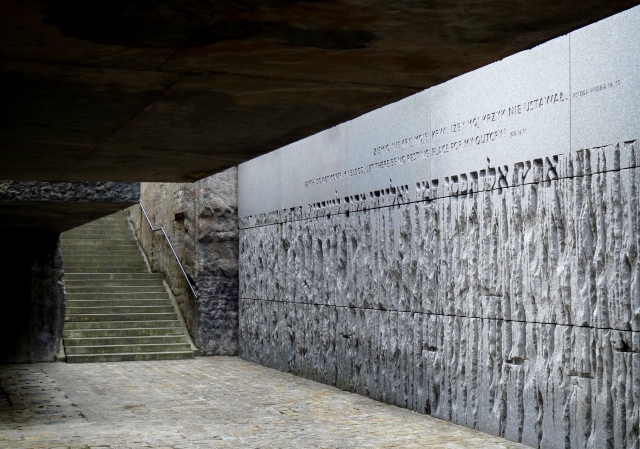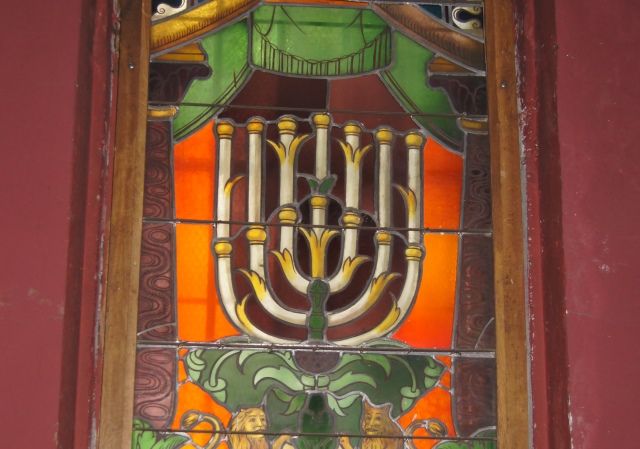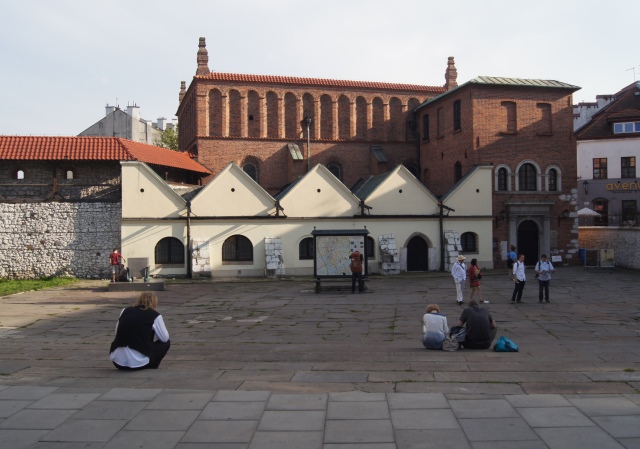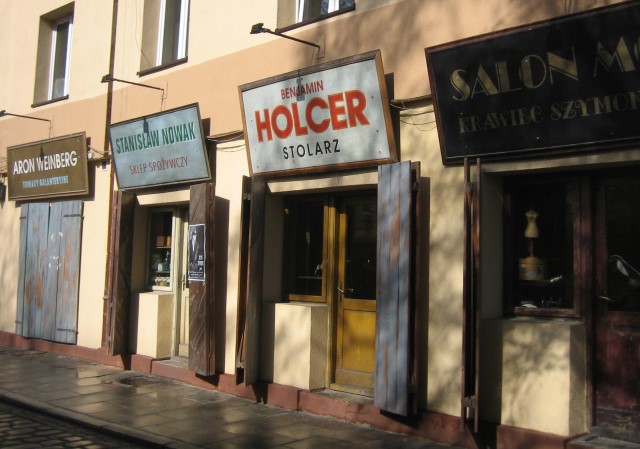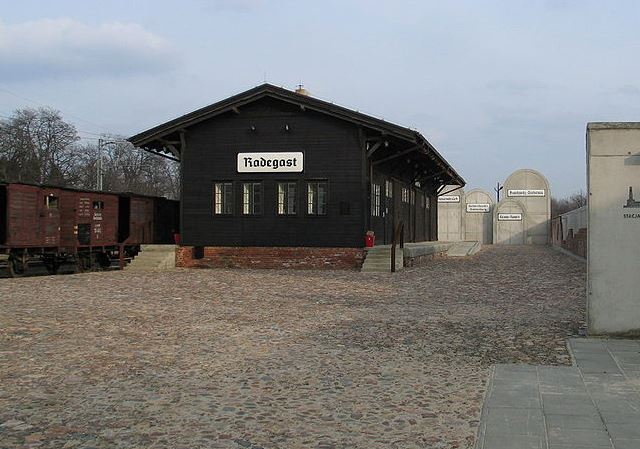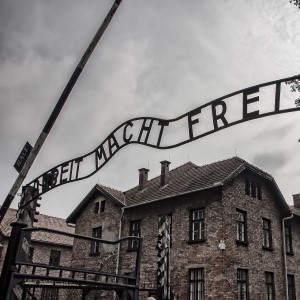Holocaust
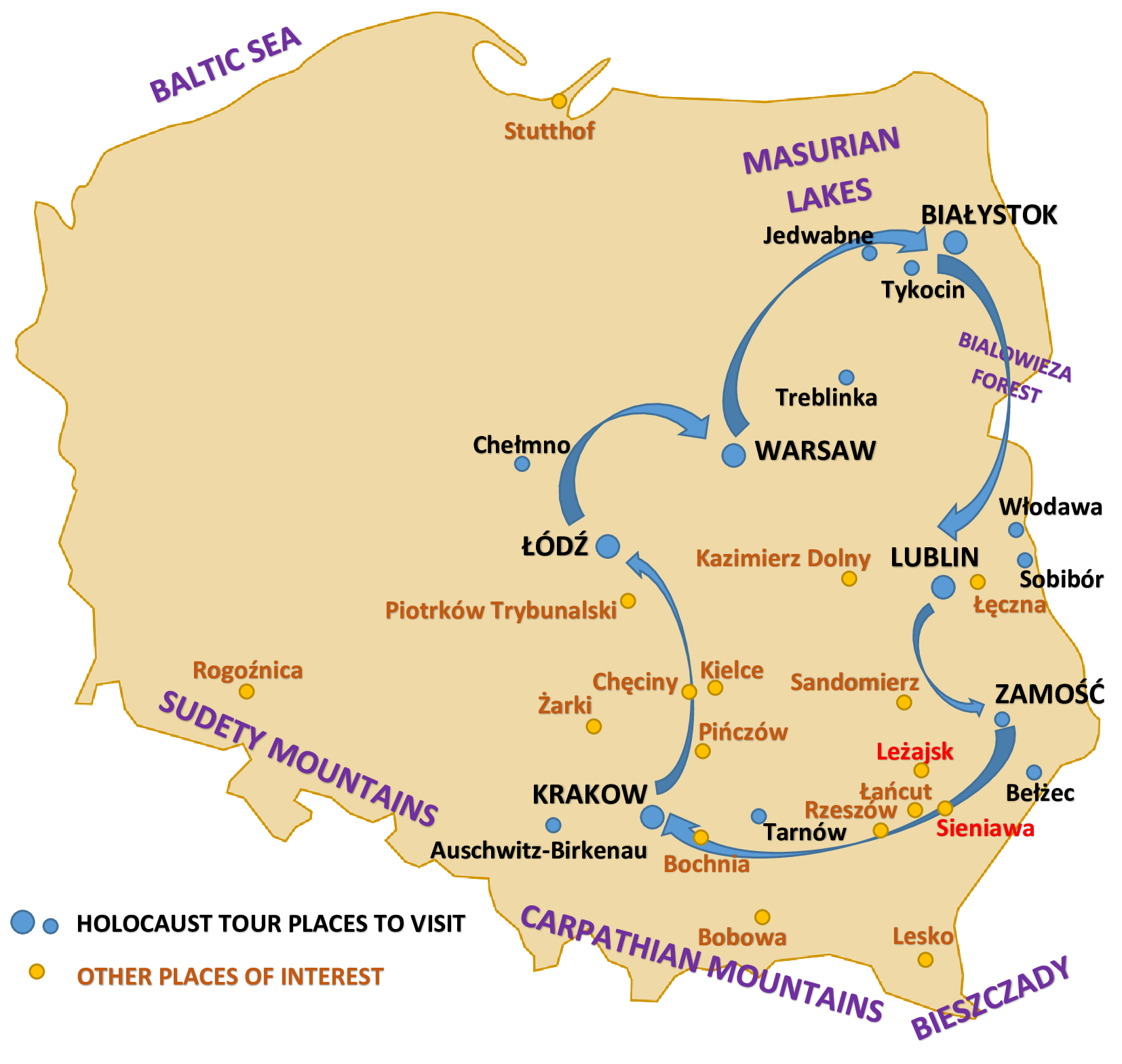
DAY 1 – Arrival in Warsaw.
DAY 2 – Warsaw
In pre-war Warsaw Jews constituted 30% of the population. There were about 400 houses of prayer in the city. In occupied Warsaw the Nazis established a ghetto, closing its gates on November 16th, 1940 and preventing the inhabitants from leaving this overcrowded area. Tour of the sites commemorating the life and extermination of the Warsaw Jewish community: The Nożyk Synagogue – the only pre-war synagogue that persisted in Warsaw until present times; the remains of the ghetto wall; Jewish Cemetery in Okopowa Street – established in 1806, still active and filled with graves of tzadiks, rabbis, people of culture and science, also operating during the ghetto’s existence and constituting a mass grave of its victims; Umschlagplatz – the place of assembly and deportation of 300.000 Jewish residents to the death camp in Treblinka; Memorial Route of the Jewish Martyrdom and Struggle in Warsaw with nineteen stone blocks commemorating the history of the ghetto; 18 Miła Street – location of the bunker where Mordechai Anielewicz, one of the Ghetto Uprising leaders, was caught by the Nazis on May 8th, 1943; the Monument to the Ghetto Heroes – designed by Nathan Rapaport, unveiled among the city ruins in 1948; Polin – Museum of the History of Polish Jews – presenting 1000 years of history, awarded for the best European Museum in 2016.
DAY 3 – Warsaw – Treblinka – Jedwabne – Białystok
Departure for Białystok with en-route visit to Treblinka and Jedwabne.
Treblinka – Treblinka II was established in 1942 next to the already existing Treblinka I labour camp as part of the Operation Reinhardt. The first transport arrived to this extermination camp on July 23rd, 1943, bringing the first victims from the Warsaw ghetto. It is estimated that about 800.000 people, brought not only from the territories of occupied Poland, were murdered in the gas chambers of Treblinka. On August 2nd, 1943, an uprising started by prisoners broke out. 200 of them managed to escape, probably about 100 survived the war. At present, on the site there is a monument made of thousands of stones commemorating the victims of the camp. Its shape resembles the railway station, gas chambers and piles on which corpses were burnt.
Jedwabne – in July 1941 it became the place of the massacre of Polish Jews. About 300 inhabitants were burned in the barn where today is a memorial to that genocide.
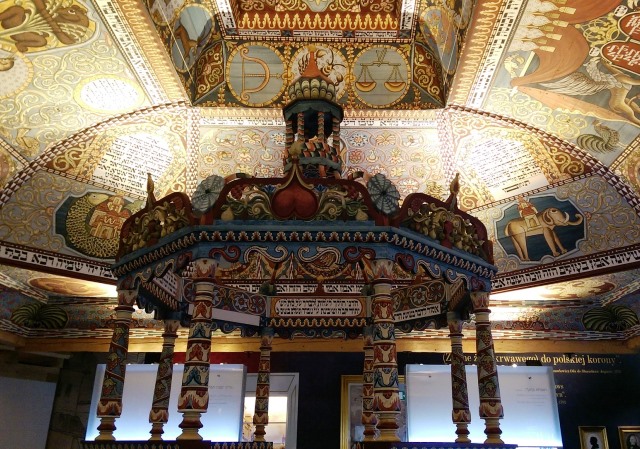
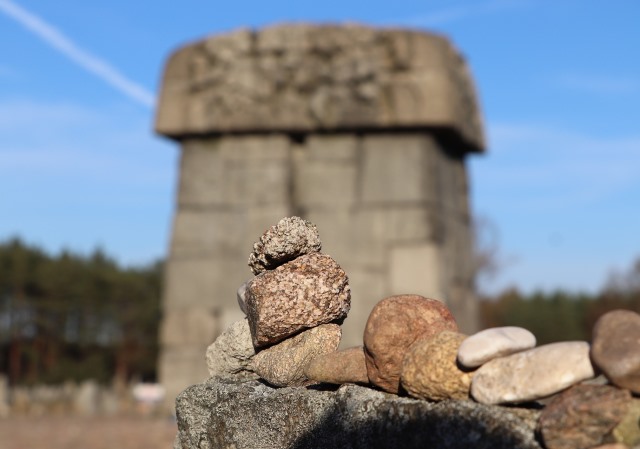
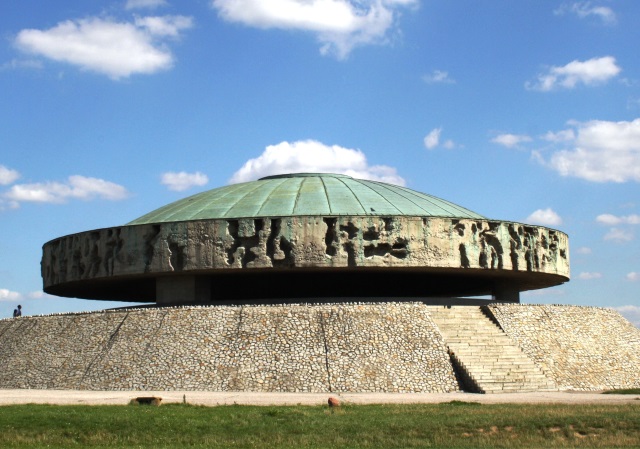
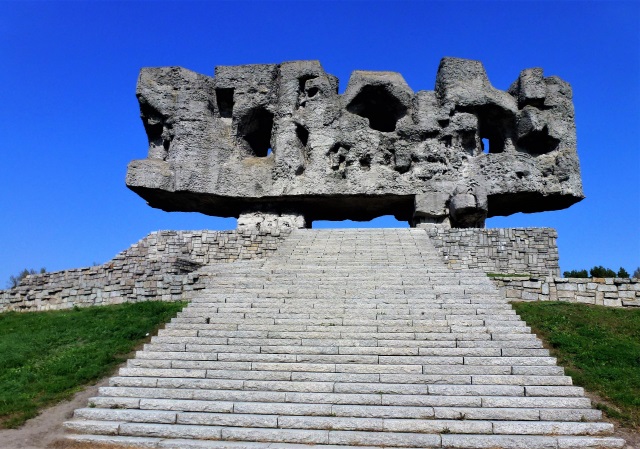

DAY 4 – Białystok – Tykocin – Łopuchowo – Włodawa – Sobibór – Lublin
Tour of Białystok – the town with diversity of nationalities where Jews constituted about 42% of the community. The synagogue buildings, which do not serve as houses of prayer anymore, have remained undamaged to this day. The Great Synagogue was burned down by the Germans in June 1941. About 2.500 men and boys of Jewish origin died here. Today there is a monument in the shape of – the burnt roof of the synagogue. A ghetto for 40.000 people was created and in August 1943 an uprising against its liquidation broke out. Białystok was also the home town of Ludwik Zamenhoff, the inventor of the International language – Esperanto. Departure for Lublin with en route visits to Tykocin, Łopuchowo, Włodawa and Sobibór.
Tykocin – it still retains the appearance of a typical shtetl, being one of few such places in Poland. Jews lived here from the 16th century. The Great Synagogue from the 17th century, restored after the war, has been preserved to this day with historic polychromes and a museum. The importance of Tykocin is confirmed by the fact that until the 18th century Jews from Białystok were also buried here. Unfortunately, only few matzevot remained in the cemetery. It was devastated during the war and the tombstones were used to build roads. The Jewish community of Tykocin was murdered in the nearby Łopuchowo forest. It holds mass graves of 2.500 inhabitants.
Włodawa – during the 19th century the Jewish community of Włodawa reached over 80% of the town’s inhabitants. Today their presence is testified by a complex of 3 buildings, unique on a national scale, which belonged to the Jewish community: the Great Synagogue, the Small Synagogue and the communal building (kahal house). Now a museum with a beautiful baroque interior, a bimah reconstructed in 2004 and the original Aron Hakodesh (the holy ark).
Sobibór – established between April and May 1942 as the second death camp under Operation Reinhardt. To this day, there is a ramp where victims left the train. The largest group of victims were Dutch Jews of about 34.000. On October 14th, 1943 an uprising broke out, about 500 people escaped of whom only few survived the war. The camp was liquidated after the uprising.
DAY 5 – Lublin – Majdanek – Zamość
Tour of Lublin – the city made famous by Isaac Bashevis Singer through his book “The Magician of Lublin”. It was here that from the 16th century Jewish printing houses developed and the Va’ad Arba’ Aratzot or the Council of Four Lands debated until the 18th century. Here was born, lived and was buried Jakub Izaak Horowitz called The Seer of Lublin – father of Polish Hasidism. In 1930, Yeshiva Chachmei Lublin, a school for rabbis, was opened and operated until the war; the building still exists today. At the foot of the Castle, in the Jewish district, the Germans established a ghetto, transporting its inhabitants mainly to the death camp in Bełżec. The presence of the Jewish community in this district is reminded by the Jewish Gate which once divided the Catholic and Jewish world. Nowadays houses the NN Theatre, an institution that educates about the Jewish past of the city. Departure for Zamość with en-route visit to Majdanek.
Majdanek – operated as a labour camp from October 1941 with prisoners of about 30 nationalities. Jews constituted the largest number of victims. Nowadays in the site of the former camp you can still see buildings that give an idea of the conditions in which the prisoners lived, the gas chamber building and the crematorium. The mausoleum contains the ashes of the victims collected from the area.
DAY 6 – Zamość – Bełżec – Tarnów – Zbylitowska Góra – Kraków
Tour of Zamość – from 16th century a home town for Sephardic Jews. The urban layout of the Old Town has been preserved. 11.000 Jews lived here before the war. Today the synagogue building is used as a cultural centre. Zamość is the birthplace of Isaac Leib Peretz (born in 1851) – one of the main authors of Yiddish literature. Departure for Kraków with en-route visit to Bełżec, Tarnów and Zbylitowska Góra.
Bełżec – an extermination camp where 45.000 Jews were murdered. It was here that the Germans tested the method of killing in gas chambers, later used in Sobibór and Treblinka. Today – a deeply moving monument and museum.
Tarnów – you can still find many traces of the Jewish community in the city including buildings, traces of a mezuzah, a restored advertisement painted on the wall in Yiddish. The old synagogue was burned down in 1939. Its location is marked by a preserved stone bimah. The original fence of the synagogue can also be found at Żydowska Street.
Buczyna forest – Zbylitowska Góra – located a few kilometres out of Tarnów, it is the place where inhabitants of the Tarnów ghetto were murdered. It is estimated that 6.000 – 8.000 victims – men, women and children – are buried here in mass graves.
DAY 7 – Krakow
Tour of Krakow – the city that was not destroyed during World War II. Visit to Kazimierz – former Jewish district, after years of oblivion it has become one of the most popular places in Krakow with its synagogues and mikvahs. The local community meets for prayer in the Remuh Synagogue. The Temple Synagogue attracts visitors with its beautiful interiors and the Old Synagogue with a collection of Jewish ceremonial art also known as Judaica. The ghetto in Krakow was established in a different district than Kazimierz, in Podgórze. Deportations to the concentration camps took place from Zgody Square (today Square of the Ghetto Heroes with a monument). The witness of this dramatic events was Tadeusz Pankiewicz, owner of the Eagle Pharmacy near the square. In the former location of the pharmacy there is a museum that presents the history of Krakow’s Jews. Near the place of deportation there is the Oskar Schindler’s Enamel Factory – nowadays a museum of the history of occupied Krakow. Continue the tour with the visit to Płaszów – a labour camp established on the site of two Jewish cemeteries. It existed between 1943-1945. Today there is a monument to the Victims of Fascism. The exact number of prisoners is unknown.
DAY 8 – Auschwitz – Birkenau
Drive to Oświęcim – the origins of the Jewish community in Oświęcim go back to the 16th century. Only one synagogue, over a hundred years old, has survived until today. In the adjacent building visitors can see an exhibition showing the history of the local Jews through documents, items, memories. The 16th century cemetery, devastated by the Germans in 1941, has today about 1000 matzevot, not many of them in their original place. The oldest identified tombstone, part of the lapidarium, is from 1757. The last Jewish inhabitant of the city was buried in the cemetery in the year 2000.
Visit to Auschwitz-Birkenau – a grim reminder of Nazi terror and the holocaust build on the outskirts of Oświęcim – now the Museum or Martyrdom consisting of brick barracks with shocking exhibits of tons of hair, shoes, glasses and other belongings wrested from the victims, while nearby Birkenau has hectares of wooden barracks and gas chambers.
DAY 9 – Subcamps of Auschwitz – Łódź
Visit to Auschwitz III Monowitz exhibition presenting the collection of objects related to IG Farben, a factory in Monowitz. Continue with the visits to Budy and Jawischowitz – Auschwitz subcamps. Auschwitz had several subcamps. There was a penal camp for women in Budy in which 90 French prisoners were murdered. At present day it is a small museum with memorabilia related to Auschwitz. In the area of today’s park of Jawiszowice the original elements of the former hard labour camp can be seen.
Departure for Łódź. Parallel to the evolution of industry and economy in Łódź, the Jewish community developed; cultural, scientific and artistic life prospered. Between the 19th and 20th century there were four Great Synagogues and hundreds of private prayer houses. One of the examples of the development of industrial empire is the life of Izrael Poznański, the owner of industrial facilities, weaving mills, a manufacture, whose original buildings have become a commercial, culinary and cultural centre today.
DAY 10 – Łódź – Chełmno
Tour of Łódź including visit to: the Cemetery in Ogrodowa Street with the original buildings of the funeral home – the burial place of the Jews of Łódź where the tomb of Izrael Poznański outstands and where the victims of the ghetto were buried; The Reicher Synagogue from the beginning of the 20th century still serving the Jewish community; Bałuty and the Old Town – the most neglected and poor part of the city in 1940 – where the Litzmanstadt Ghetto for up to 180.000 residents was established; Radegast – today a museum dedicated to the history of the ghetto of Łódź with the original building and railway tracks preserved, the place from where 70.000 people were transported to the death camp in Chełmno, 80.000 to Auschwitz – Birkenau and from where trains with people departed for other camps such as Ravensbrück, Sachsenhausen-Oranienburg, Gross Rosen and Stutthof.
Continue to Chełmno on the Ner River – Rzuchowski forest – the site of extermination camp operated by Nazi Germany in 1941–1945. The first transport arrived here on December 8th, 1941. The victims were murdered in mobile gas chambers with exhaust fumes and their bodies were buried in the nearby forest. Jews were brought from the nearest ghettos, the ghetto of Łódź, from the Reichsgau Wartheland, Germany, the Czech Republic and Austria. Former granary – the only building that survived the war – houses an exhibition presenting the history of Kulmhof Death Camp near Chełmno and the objects belonging to the victims. In January 1945, the last Jewish prisoners of the camp were murdered in the granary. The total number of victims is estimated at 200.000.
DAY 11 – departure from Warsaw
